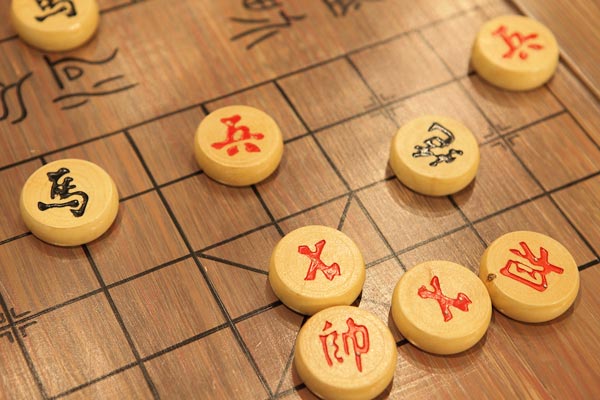Fan-making skills, a local traditional handicraft in Suzhou, Jiangsu, China, is one of China's national intangible cultural heritages.
Su fans are a specialty of Suzhou, China, and are famous for their elegance, exquisiteness and artistic characteristics. They include three categories: folding fans, sandalwood fans and silk palace fans, collectively known as "Suzhou elegant fans". Since the Ming and Qing Dynasties, Su fans have been widely circulated mainly in Suzhou and surrounding areas. Suzhou elegant fans combine various exquisite craftsmanship, including modeling, mounting, carving, inlaying, lacquering and other crafts.

Historical origins
Su fans are a specialty of Suzhou, including three categories: folding fans, sandalwood fans and silk palace fans, collectively known as "Suzhou elegant fans"; since the Ming and Qing Dynasties, they have been widely circulated mainly in Suzhou and surrounding areas.
In the Southern Song Dynasty, people in Suzhou made their own folding fans. In the Xuande period of the Ming Dynasty, workshops were set up to produce them, and famous brand products appeared, such as the black bamboo bone mud gold fan. During the Shunzhi period of the Qing Dynasty, Suzhou fans became royal tributes, and the fan-making industry began to flourish.
After the 1980s, people's lifestyles changed dramatically, and the emergence of electric fans and air conditioners caused the importance of fans to decline sharply. In the late Qing Dynasty and the Republic of China, there were hundreds of Suzhou fan shops and cultural and antique shops that sold Suzhou fan blades and fan bones in Shanghai alone, and only Wang Xingji and Duoyunxuan remained. There are only three or four local fan-making artists in Suzhou, and some crafts are on the verge of being lost.

Craft features
Suzhou has always had a tradition of fan making. Folding fans, sandalwood fans and silk palace fans are collectively called "Suzhou elegant fans". The "black bamboo bone mud gold fan" is a representative. Sandalwood fans developed from folding fans, made of sandalwood, and exude a natural fragrance. Suzhou is the birthplace of sandalwood fans. It uses "drawing", "hot stamping", "carving" and "painting" techniques to paint landscapes, flowers and birds on the fan surface, which is casual and elegant. Silk palace fans are mainly round, hexagonal, rectangular, waist-round and other shapes, painted with landscapes, flowers and birds, figures and other paintings, and also inscribed with famous poems, antique and very ornamental. Suzhou elegant fans combine various exquisite craftsmanship, including modeling, mounting, carving, inlaying, lacquering and other craftsmanship. They condense and depict the mountains, rivers, flowers, birds and figures of Wu, and their exquisite craftsmanship itself constitutes a splendid chapter in Wu culture. The fan ribs and fan surface are the main body of the fan. The key to the production of fan ribs is fine workmanship and meticulous work. In the south, bamboo is mostly used as the fan rib material, which must be selected, boiled, A series of processes such as drying, splitting, forming, and baking are used, and the beauty of the material's light and color is reflected through polishing and grinding techniques, and then the fan bones are beautified through carving and inlaying. In addition to bamboo, fan bones also use high-quality woods such as ebony, rosewood, white sandalwood, nanmu, chicken wings, boxwood, peach silk wood, and other materials such as animal bones, tortoise shells, ox horns and even metals. During the Ming and Qing Dynasties, fan production became more and more sophisticated. It became a fashion for literati and poets to write inscriptions and paint fans. For example, Shen Zhou, Wen Zhengming, Tang Yin, and Qiu Ying, the "Four Masters of Wumen", have all created a large number of fine fan paintings and calligraphy. With the participation of literati and scholars, engraving calligraphy, seal carving, patterns, etc. on the fan bones not only promoted the fan bone production skills, but also enhanced the artistic value of the fan - the subtlety and meticulousness of the carving reflects the fan The elegance and taste of the fan complement the art of fan surface and become a unique art form.
The ribs of folding fans are famous for their rich variety and meticulous workmanship. The polished bamboo folding fan ribs are even, smooth, elegant and simple. With the development of history, the shape and decoration of water-polished jade folding fans have become more and more refined and elegant. The fan ribs have been improved and developed from "sixteen squares" to slender and elegant "eighteen squares". There are dozens of fan heads with different colors, including eggplant, ancient square, swallowtail, magnolia, plum blossom and bamboo joints. Fan makers use grinding, lacquering, carving, inlaying and shallow and deep carving techniques on bamboo ribs to carve flowers, birds, insects, grass, landscapes, figures, antiques, fairies, coins, bells and tripods, seals and official scripts, and poems and songs, and add famous paintings and seals to make the fans more beautiful and precious.

Process flow
Su fan is a general term for Suzhou folding fans, sandalwood fans, silk palace fans, and paper round fans. The ribs of Suzhou folding fans are very particular, mainly bamboo, as well as ivory, tortoise shell, red sandalwood, ebony, etc. Among them, the bamboo ribs of water-polished bones must go through the process of boiling, drying, baking, scraping, dragging, pouring, grinding, etc., and must be polished and dried with soaked horsetail grass, polished with elm leaves, and finally waxed. If calligraphy and painting are engraved on it, it will be the icing on the cake.
Sandalwood fans are made through more than ten processes such as sawing, assembly, chiseling, mounting, etc.

Inheritance value
Suzhou elegant fans are highly practical, and are also a kind of artwork that is closely integrated with poetry, calligraphy, painting, carving and other arts, and have a high ornamental value.




